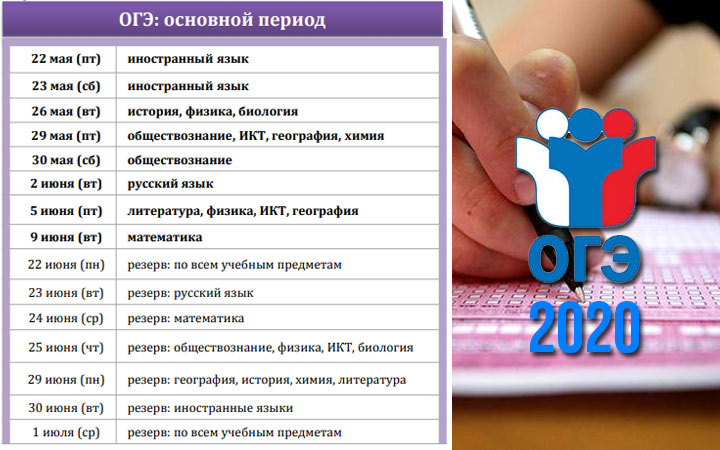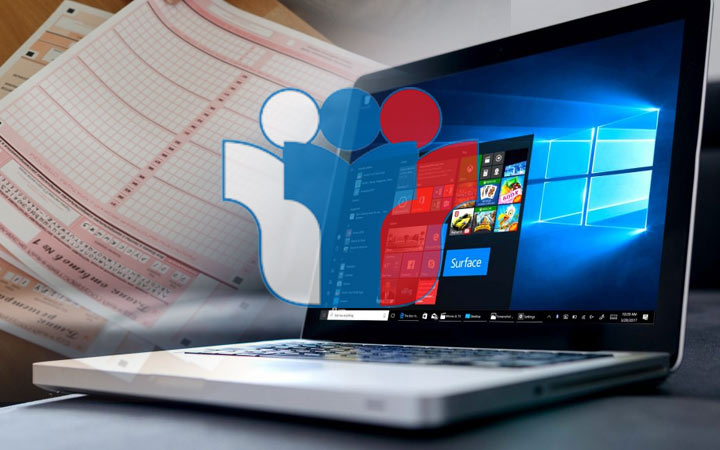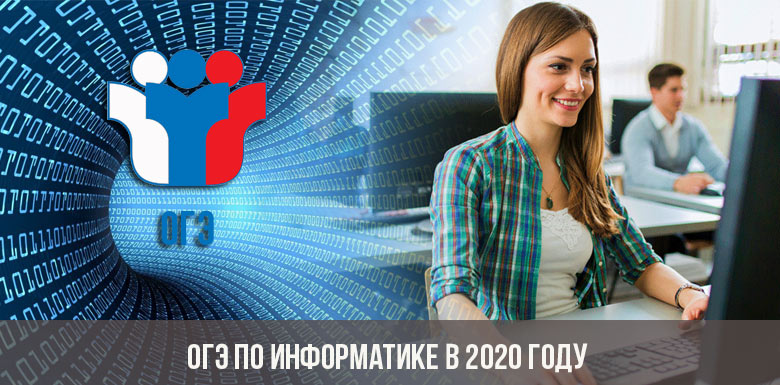There is not so much time left for students who finish 9th grade in 2020 and we suggest discussing what changes FIPI announced in the computer science exam, and how the preparation and the GIA-9 format will differ.
Interest in computer science is growing every year, which means that the number of ninth-graders who will choose computer science in the 2019-2020 academic year as one of the subjects of the OGE by choice will also increase. Today it’s worth thinking about preparing for the exam for anyone who plans to connect their lives with such popular professions as a web developer, programmer, cyber security specialist, etc. We will tell you how KIM in computer science will change in the new season of the United State Examination, as well as We will tell you about the secrets of effective preparation.
Dates
In the main period of the OGE 2019-2020 academic year, computer science can be passed on such days:
Main day | Reserve |
May 29, 2020 Friday June 5, 2020 Friday | June 22, 2020 Monday |
June 29, 2020 Monday | |
July 1, 2020 Wednesday |

The draft schedule for the preliminary period of the Unified State Examination 2020 (March-April), as well as the schedule of the September FIPI broadcasts are traditionally approved closer to November. As soon as official information appears on the full draft of the GIA calendar for the 2019-2020 academic year, we will be the first to talk about the planned dates for exams.
Exam format
In 2020, FIPI plans to modernize KIMy for OGE in computer science. Innovations are dictated by the features of the program according to which examiners who graduate from grade 9 in the 2019-2020 academic year were trained. It is worth considering that unlike the graduates of all previous years, this will be the first graduate to study according to the standards of the Federal State Educational Standard from the 1st grade.

The main requirement of the new educational standard introduced from the 2010-2011 academic year is a practical approach to the study of computer science, which excludes the machine-less format for teaching this discipline.
Based on the standards of GEF and current programs, FIPI has developed new KIMs that graduates of 2020 will face. Otherwise, the format of the GIA-9 in computer science will remain unchanged:
- the exam will be held in the walls of your own educational institution;
- duration - 2 hours 30 minutes (150 minutes);
- Answers of the 1st part are entered in the form;
- the answer to the tasks of the 2nd part is a file that will need to be saved on a PC;
- the use of any calculators is prohibited;
- access to the Internet on a PC on the day of the OGE is blocked;
- examinees are provided with blank files for completing some tasks of the 2nd part.
At the same time, normative documents stipulate that graduates should be provided with computers with software, which students used in computer science lessons (text and table processors, presentation editor, environment for compiling algorithms, programming environment) at graduate students.
Important! Examiners are given the right to choose a programming language when solving problem No. 15.
Major changes
So, preparation for the GIA should always begin with an introduction to what changes will occur in the tickets, and we offer a more detailed look at the innovations of the demo version of the new KIM presented on the FIPI website.
In 2020, ninth graders at the Unified State Examination in Informatics will have to complete 15 tasks (in 2019 there were 20), which will be divided into two blocks:
Block | Qty | Features |
№1 | 10 | With a short answer (without PC) |
№2 | 5 | With a detailed answer (practical work with a PC) |
Important! Teachers recommend that 30 minutes be allocated to the 1st block from 150 minutes, and the remaining 120 minutes should be devoted to the implementation of practical tasks.

Of the 10 tasks of the 1st block, 7 are questions of a basic level and 3 are of increased complexity. In the second block, the number of tasks with a high level of complexity increased to 3, but practical tasks of a basic and advanced level will also be encountered.
All tasks will be approximately evenly distributed between three main topics:
- Mathematical foundations;
- Information Technology;
- Algorithmization and programming.
Some tasks in 2020 will be similar to last year, but in the new KIMs they will no longer have ready-made answer options, which eliminates the solution of the problem by banal substitution of numbers.
Grading
The maximum number of test points at the OGE 2020 in computer science is 19.
For the correct answer to each of the questions of the first part, the examiner will be able to get 1 point. Accordingly, having coped with 10 questions, you can earn only 10 points, which will be enough to get a certificate, but will not open the doors of a specialized class or college to a graduate.

The tasks of the second part are estimated from 1 to 3 points depending on the level of difficulty. Tasks No. 11, 12 are rated at 1 point, a little more (2 points) can be obtained for the correct completion of tasks:
- № 13 (creating a presentation or formatting the text);
- №15 (algorithm for the executor "Robot");
The maximum number (3 points) can be earned by correctly completing all three subparagraphs of task No. 14 (work in a table processor).
Also on the FIPI website the recommended tables for transferring test scores of the United State Examination 2020 in computer science to a school grade are already presented:
Total score | Rating |
16-19 | 5 |
10-15 | 4 |
4-9 | 3 |
0-3 | 2 (did not pass) |
Secrets of preparation
As in any other discipline, preparation for the OGE 2020 in the subject of “computer science” involves repeating the theoretical foundations of the topics studied from grades 5 through 9, as well as developing practical skills.

If the subject has been fully taught at the school all these years, graduates should not have problems with completing the tasks proposed in the new KIM. But, to get maximum self-confidence, it is worth:
- carefully disassemble the demo version presented on the FIPI website;
- to practice solving the problems proposed in the GIA-9 database;
- work through tickets for 2019, since most tasks are very similar in terms of wording;
- highlight topics that cause difficulties and work out them in more detail on their own or with a tutor.
Important! Some tasks of the OGE 2020 will require that a student graduating from grade 9 not only have a good orientation in the subjects of the subject “computer science”, but also the ability to perform mathematical calculations.
Since calculators (including the built-in computer OS) are not allowed to be used, some examiners may have problems with calculations when solving problems of calculating the amount of information and the number of possible requests to the server. There is only one advice - train your oral score, do not rush to enter the final answer on the form and solve as many problems as possible at the preparation stage (naturally, without using a calculator).
During the implementation of practical tasks, carefully read the condition! Remember that all calculations performed in a table processor must be performed using appropriate formulas or functions. When solving task No. 18, it will be necessary to demonstrate the ability to correctly manipulate variables, and also to combine loop and branch operators when writing a program.
We also offer to see video analysis of solving the demo version of the promising OGE 2020 model in computer science:
Read also:




















